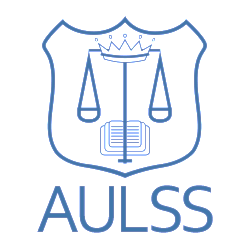A Greener, Cleaner State
South Australia pioneering positive environmental change
Written By Aditi Tamhankar and Edited By Divya Narayan
With World Earth Day around the corner,[1] discussions centred around Australia’s approach to pressing environmental issues have emerged. South Australia has historically showed leadership in its environment initiatives like the container-deposit scheme,[2] or the plastic bag ban.[3] South Australia’s recent legislative action is no exception, prompting a nationwide response on the importance of recycling initiatives.
The Single-use and Other Plastic Products (Waste Avoidance) Act 2020 (‘Waste Avoidance Act’) came into effect from 1 March 2021 and prohibits ‘single-use plastic straws, cutlery and stirrers’ and other ‘bioplastic alternatives’ from ‘sale, supply or distribution’.[4] The push towards a greener community became evidence after a 2019 government discussion paper found 96.84% of respondents from the South Australian community favoured government intervention to address single-use plastics usage.[5]
Studies have repeatedly shown that the temporary benefit of single-use plastic products do not outweigh their detrimental long-lasting effects. The average person uses a straw for 20 minutes before discarding it – to put that into context, South Australians use approximately 700,000 straws daily![6] Of the 300 million tonnes of plastic produced yearly, nearly half is single-use plastic.[7] In Australia, from approximately 2.6 million pieces of debris found at Australian beaches in 2016 and 2017, three quarters were plastic.[8]
The Waste Avoidance Act imposes serious penalties of up to $20,000 dollars for those who produce, distribute and sell single-use plastics, with exemptions for people with health needs or a disability.[9] Manufacturers must adhere to a minimum standard of responsibility and are encouraged to opt for eco-friendly products. David Spiers, Minister for Environment and Water, hopes that the prohibition of wasteful plastics may redirect many towards more sustainable alternatives like ‘straws made from rye, paper and bamboo.’[10]
The second phase of the Act coming into effect from March 1, 2022 extends to ‘polystyrene cups, bowls, plates and clamshell containers’ and ‘oxy-degradable plastics’.[11]
Community recycling initiatives
Effective legislation is only one side of the coin when it comes to meaningful change. In order to truly achieve a ‘circular economy’ and one that is ‘regenerative by design’ we must prioritise the longevity and sustainability of resources.[12] Firstly, wherever possible, we should purchase products made from recycled materials, which reinforces a cycle of supply and demand and therefore support Australian recycling industries. Nine councils in South Australia have already signed a memorandum of understanding to prioritise purchasing recycled products![13]
There are also simple lifestyle changes we can make. Checking the Australasian Recycling Label[14] before disposing of packaging increases the chances of materials being available for future use. The website https://recyclingnearyou.com.au/arl/ has a comprehensive guide explaining each label. Similarly, https://www.whichbin.sa.gov.au is a fantastic South Australian website where you can plug in a specific material to discover which bin it goes in, filtered for your suburb.
41% of Australians falsely believe soft plastics like cereal bags and bubble-wrap can be recycled at home.[15] Instead, drop your soft plastics off at a REDcycle collection bin at your closest Coles or Woolworths the next time you are grocery shopping so that these materials can be repurposed to produce a wide range of recycled-plastic goods.[16]
For the most avid coffee-enthusiasts on North Terrace – us law-students – it feels pertinent to add one last tip on coffee cups. South Australia uses up to 575,000 disposable coffee cups per day, yet it is not commonly understood that these cups are not actually recyclable because they have a polyethylene lining to function as a moisture barrier.[17] Before hastily throwing a cup into the recycling bin, check whether it is a compostable alternative; or better yet, invest in a trendy reusable cup! These easy steps go a long way in minimising the risk of contamination at the sorting facility.
Summary
The legislative framework implemented in South Australia will foster meaningful change. It paves the way for future legislation targeting crucial recycling objectives. For this and any future legislative framework to succeed, we as individuals have the power to take important steps towards fostering a responsible and sustainable community.
[1] EARTHDAY.ORG, Earth Day 2021 (Web Page) <https://www.earthday.org/earth-day-2021/>.
[2] Environment Protection Authority, Container deposits (Web Page) <https://www.epa.sa.gov.au/environmental_info/waste_recycling/container_deposit>.
[3] Environment Protection Authority, Plastic bag ban (Web Page) <https://www.epa.sa.gov.au/page/view_by_id/3885>.
[4] Single-use and Other Plastic Products (Waste Avoidance) Act 2020 s 6 (‘Waste Avoidance’).
[5] Government of South Australia, Turning the Tide on Single-Use Plastic Products (2019) [8].
[6] Government of South Australia, Single-Use Plastics and the Container Deposit Scheme (2019) [12].
[7] United Nations Environment Programme, Our planet is drowning in plastic pollution (Web Page
<https://www.unep.org/interactive/beat-plastic-pollution/>.
[8] Graham Readfearn and Andy Ball, ‘The great Australian garbage map: 75% of beach rubbish made of plastic’, The Guardian (online, 18 April 2018) < https://www.theguardian.com/environment/ng-interactive/2018/apr/18/the-great-australian-garbage-map-75-of-beach-rubbish-made-of-plastic>.
[9] Waste Avoidance s 7.
[10] Ange McCormack, ‘SA bans single use plastic’, ABC (online, 25 February 2021) <https://www.abc.net.au/triplej/programs/hack/sa-bans-single-use-plastic/1319368>.
[11] Waste Avoidance s 9.
[12] Government of South Australia, A vision for a circular economy (2020) [5].
[13] Ibid.
[14] Recycling Near You, Australasian Recycling Label (Web Page) <https://recyclingnearyou.com.au/arl/>.
[15] Recycling Near You, Recycling MythBusters (Web Page)
< https://recyclingnearyou.com.au/nationalrecyclingweek/mythbusters/>/.
[16] Ibid.
[17] Alison Porter, ‘Are takeaway coffee cups disposable?’, CHOICE (online, 14 June 2017)
< https://www.choice.com.au/food-and-drink/drinks/tea-and-coffee/articles/are-takeaway-coffee-cups-recyclable>.
